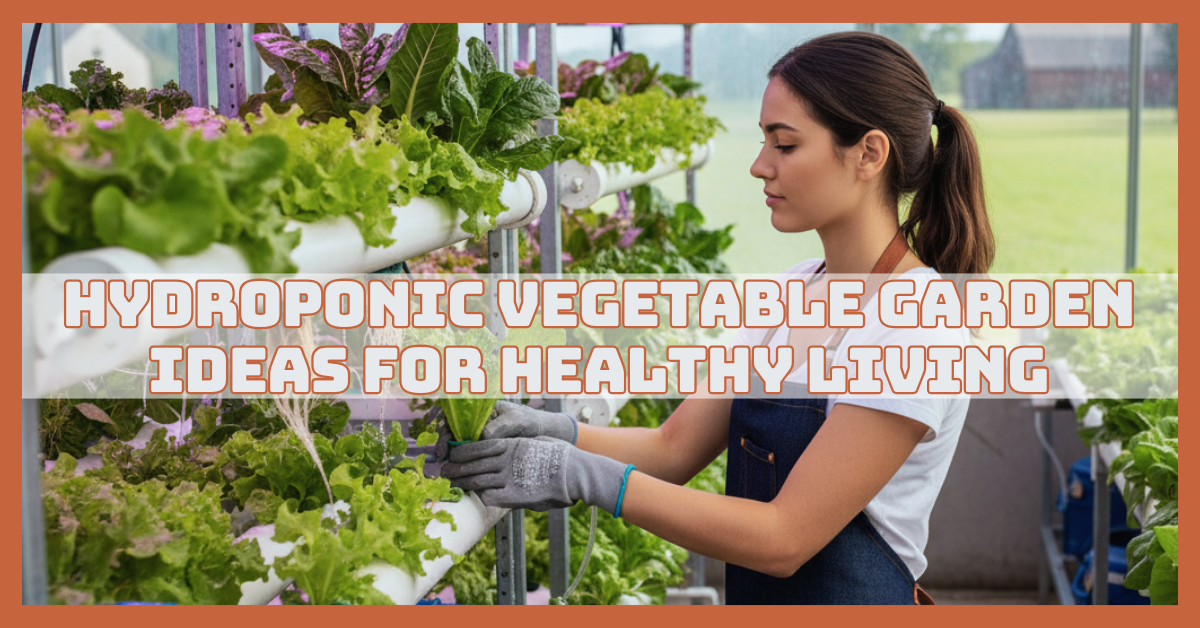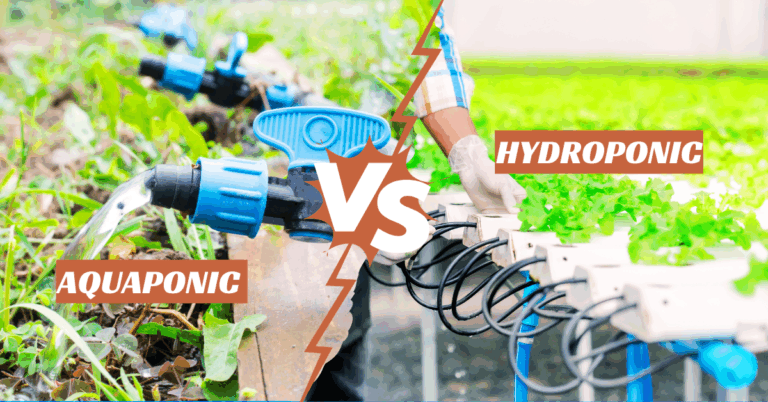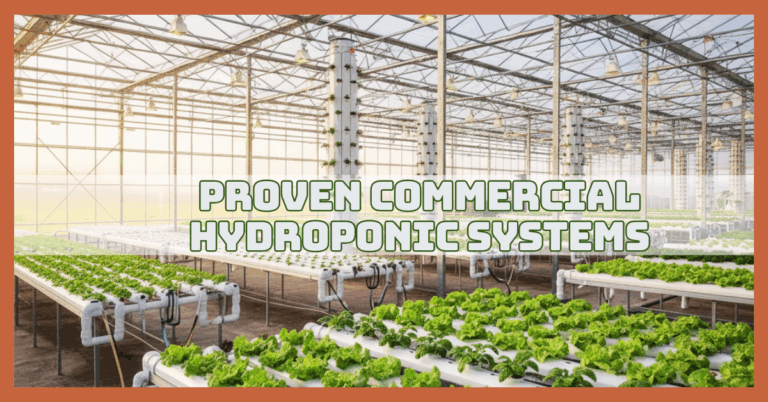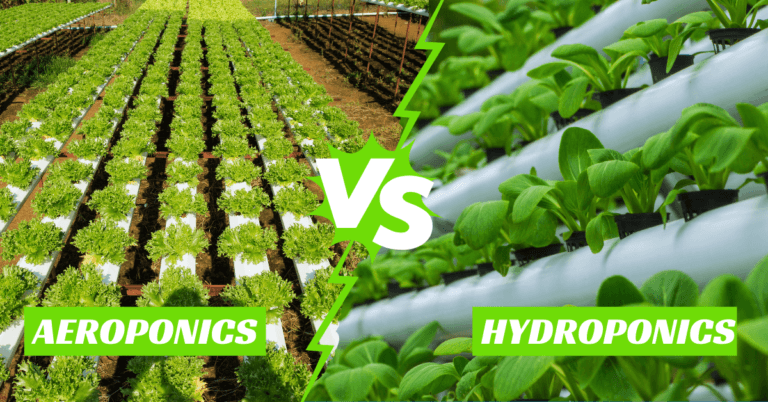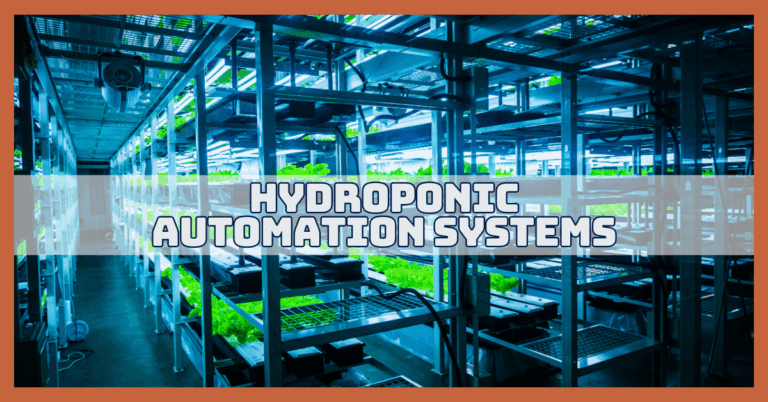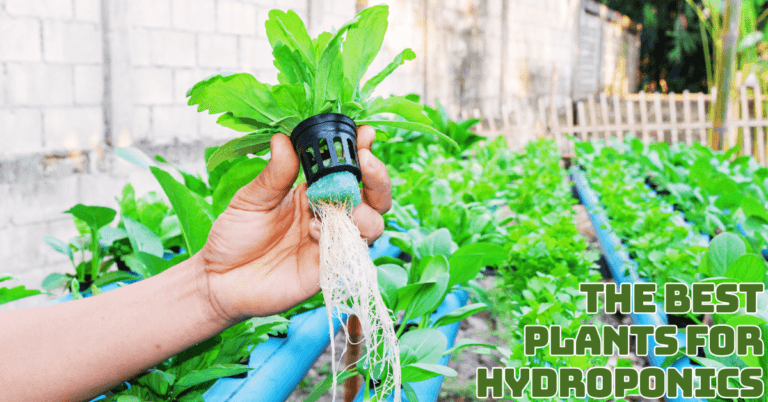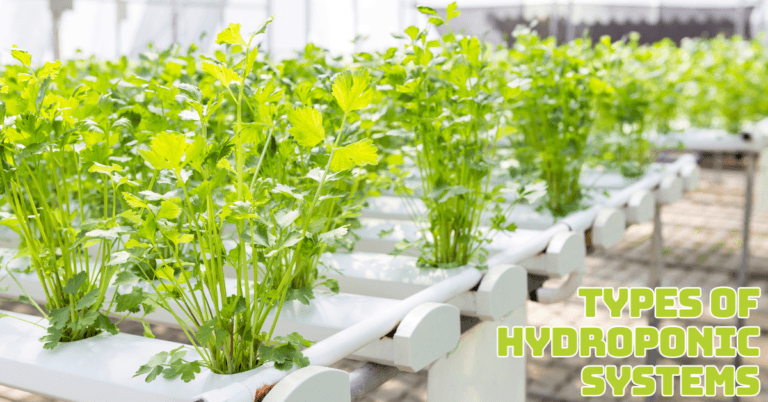Hydroponic Vegetable Garden Ideas for Healthy Living
A hydroponic vegetable garden lets you grow fresh, nutritious produce without soil, using nutrient-rich water instead. This innovative method saves space, conserves water, and produces faster, healthier harvests year-round.
Perfect for urban homes, balconies, or indoor setups, hydroponics is transforming how we grow food. Whether you’re a beginner or an experienced gardener, exploring hydroponics opens the door to cleaner, more innovative, and more sustainable gardening right at home.
Types Of Hydroponic Vegetable Gardens
1. Kitchen Countertop Hydroponics
Countertop hydroponic kits are perfect for beginners or people with limited space. To set up, choose a flat, stable surface near an outlet. Fill the reservoir with clean water and mix in the recommended hydroponic nutrient solution.
Insert seedlings or seeds into the provided net cups, ensuring roots can reach the water. Many kits include LED grow lights, which should run 12–16 hours daily.
Prices range from $50 to $150, depending on size and features. Indoor zones 4–11 work best. Ideal plants include basil, spinach, lettuce, and parsley.
Regularly monitor water and nutrient levels, change water every 1–2 weeks, rotate plants for even light, prune older leaves to stimulate growth, and harvest leaves carefully to encourage continuous production.
2. Vertical Hydroponic Towers
Vertical hydroponic towers save floor space by stacking multiple plant layers. To set up, assemble the tower per the kit instructions, attach the water pump, and fill the reservoir with nutrient solution.
Position the tower where it receives full sun or supplement with LED grow lights. Cost ranges from $150–$400, depending on height and complexity. Suitable for indoor zones 4–11 or sunny patios. Ideal crops include leafy greens, strawberries, and small peppers.
Keep the nutrient solution topped up, check water flow regularly, prune plants for proper airflow, rotate plants to ensure even light distribution, and harvest mature leaves or fruits often. Vertical towers maximize yield and are visually striking in any space.
3. Window Hydroponic Gardens
Window hydroponic gardens use natural sunlight to nourish plants. Start by placing a narrow trough or kit along a south-facing window with at least 6 hours of sun.
Fill the reservoir with water and hydroponic nutrients, then insert seedlings into net cups so roots reach the solution. Costs typically range from $40–$120. Best for indoor zones 4–10. Herbs, microgreens, and lettuce grow exceptionally well.
Monitor water levels daily, replace nutrient solution every 1–2 weeks, rotate plants so all sides receive sunlight, clean trays to prevent algae, and pinch off older leaves to encourage new growth. This approach is ideal for kitchens, offices, or apartments with limited space but ample light.
🌱 Discover How Gardening Influencers Grow, Inspire & Earn
4. Deep Water Culture (DWC) Buckets
Deep Water Culture involves suspending plant roots in oxygen-rich nutrient water. Use a 5–10 gallon bucket with holes in the lid for net cups.
In order to oxygenate the solution, add water that has been combined with hydroponic fertilizers and an air stone that is attached to a pump.
Costs range from $25–$60 per bucket. DWC works in indoor zones 4–11. Ideal plants include tomatoes, cucumbers, peppers, and lettuce.
Maintain water oxygenation, monitor pH between 5.5 and 6.5, refill nutrients weekly, prune leaves to improve airflow, remove decaying material, and harvest mature plants regularly. DWC is beginner-friendly, highly productive, and scales well for multiple crops or larger plants.
5. Hydroponic Salad Bar
A hydroponic salad bar allows you to grow multiple greens in one tabletop setup. Fill the tray with water, mix in nutrients, and place net cups with seedlings in each slot.
LED grow lights help in low-light conditions. Costs are around $100–$250. Indoor zones 4–11 are ideal. Grow a mix of lettuce, kale, arugula, and spinach.
Check water and nutrient levels daily, replace solution every 1–2 weeks, rotate plants for uniform light exposure, prune older leaves, and harvest small amounts regularly to stimulate new growth. A salad bar is practical, visually appealing, and provides fresh greens daily for healthy meals.
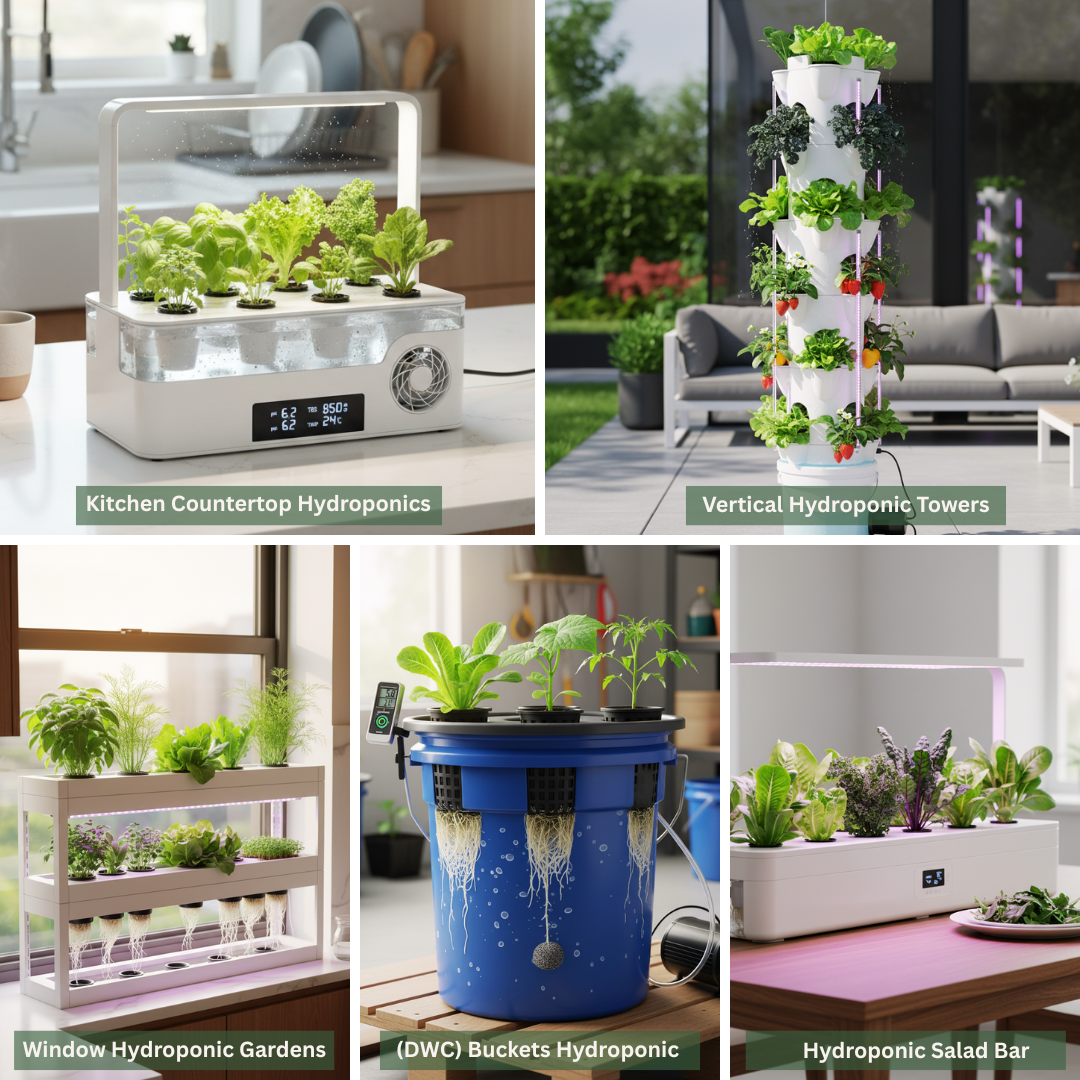
6. Balcony Hydroponics
Balcony hydroponics is ideal for apartment dwellers or anyone with limited outdoor space. To set up, choose a railing or a flat balcony area with sufficient sunlight. Use rail-mounted planters, vertical towers, or small trough systems.
Fill the reservoir with water and hydroponic nutrients, and insert seedlings in net cups. Costs vary from $80–$300, depending on size and complexity.
Balcony hydroponics works best in zones 4–10, or year-round in covered spaces. Ideal plants include lettuce, spinach, herbs, cherry tomatoes, and small peppers.
Ensure adequate sunlight or supplement with LED grow lights, check water levels daily, maintain nutrient balance, protect plants from strong winds, prune regularly for airflow, and harvest leaves or fruits frequently to encourage continuous growth.
7. Indoor Hydroponic Walls
Hydroponic walls turn empty walls into vertical vegetable gardens. Begin by mounting the wall frame or panel securely indoors. Connect a water pump system to circulate nutrient-rich water through each planting slot.
Costs can range from $250–$700, depending on size and materials. Indoor zones 4–11 are suitable. Ideal plants include leafy greens, herbs, and small vine crops like cherry tomatoes.
Ensure all layers receive adequate light using full-spectrum LED panels, clean water channels to prevent algae buildup, monitor nutrient levels weekly, prune plants to avoid overcrowding, and harvest regularly to maintain health. Hydroponic walls save space while enhancing interior aesthetics and providing fresh vegetables daily.
8. Hydroponic Greenhouses
Hydroponic greenhouses provide a controlled environment for large-scale vegetable production. The setup begins with assembling the greenhouse frame, installing hydroponic troughs or NFT (nutrient film technique) systems, and connecting pumps to circulate water.
Temperature and humidity should be regulated for optimal plant growth. Depending on size and technology, prices range from $500 to several thousand dollars.
Suitable for zones 4–11 indoors or outdoors with a greenhouse structure. Ideal plants include tomatoes, cucumbers, peppers, lettuce, and herbs.
Monitor water, pH, and nutrient levels daily, prune excess leaves, rotate crops for even light distribution, maintain proper airflow, and harvest at peak maturity. Greenhouses maximize yield year-round and provide highly nutritious produce.
9. Hydroponic Mason Jar Gardens
Mason jar gardens are a DIY-friendly hydroponic option for small spaces. Use a jar, net cup, and clay pebbles or hydroton as a growing medium.
Fill the jar with nutrient solution and place the seedlings so that their roots contact the water. Costs are very low—around $5–$20 per jar. Works best in indoor zones 4–10.
Ideal plants include herbs, lettuce, microgreens, and small leafy greens. Place jars near sunlight or under small LED lights, top up water regularly, change nutrient solution weekly, trim roots that grow too long, and pinch off older leaves to encourage new growth. Mason jar gardens are inexpensive, decorative, and perfect for kitchen counters or desks.
10. Aquaponics With Fish
Aquaponics combines hydroponics and fish farming in a self-sustaining system. To set up, fill a tank with fish such as tilapia or goldfish, and connect a hydroponic grow bed above the tank.
Water circulates from the fish tank to the plants, providing natural nutrients, while plants filter water for the fish. Costs range from $150–$500 for beginner systems. Indoor zones 4–11 are suitable with controlled lighting.
Ideal plants include lettuce, basil, spinach, and other leafy greens. Monitor water quality and temperature for fish health, maintain pH around 6.8–7.0, feed fish appropriately, prune plants to prevent overcrowding, and harvest vegetables carefully. Aquaponics is highly sustainable and educational.
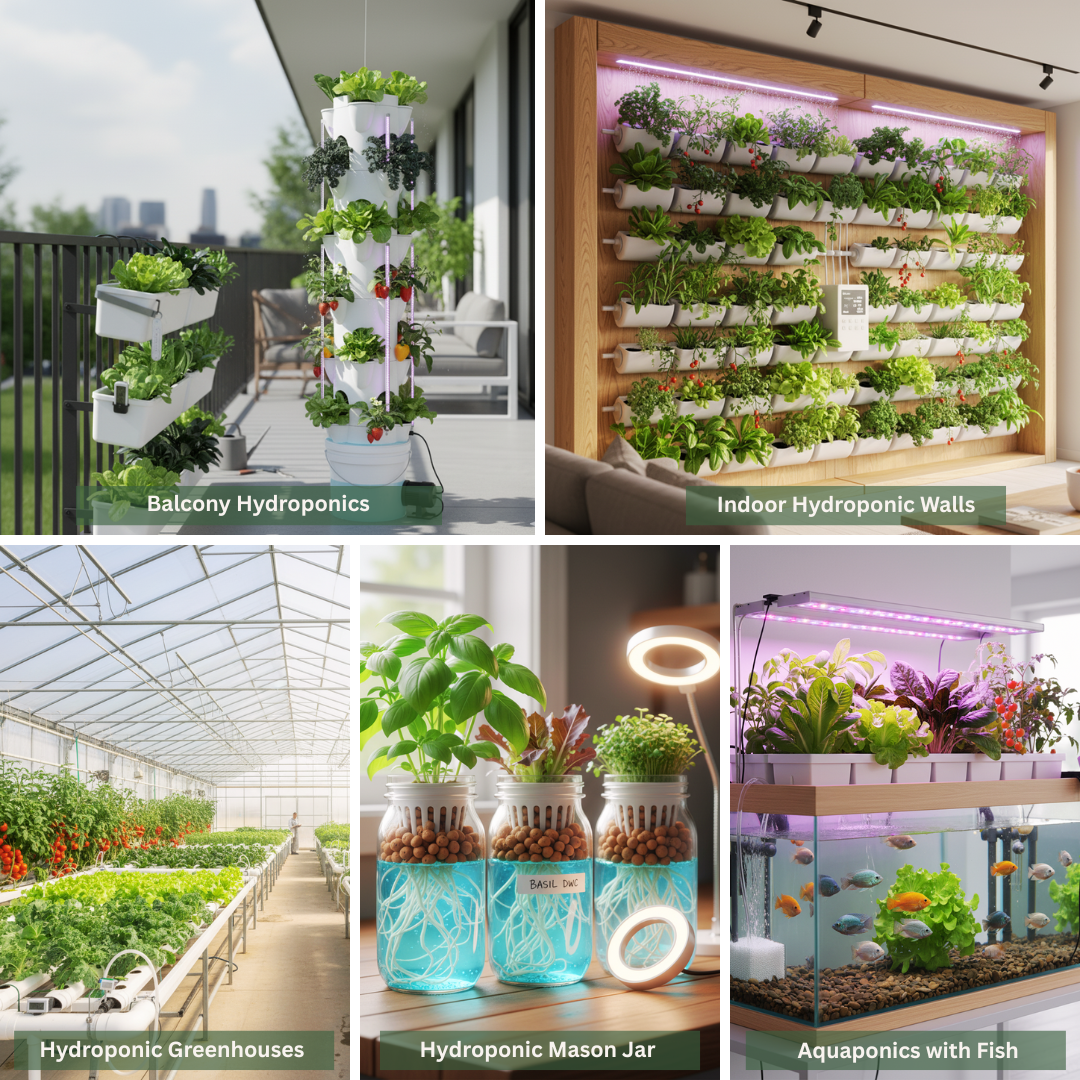
11. Classroom Hydroponics
Classroom hydroponics is an engaging way to teach kids about healthy eating and plant growth. To set up, use a small hydroponic kit with a reservoir, net cups, and seedlings.
Fill the system with water and nutrients, and place it near a sunny window or under LED grow lights. Costs range from $50–$150, depending on size and features. Suitable for indoor zones 4–11. Ideal plants include lettuce, spinach, herbs, and microgreens.
Involve kids in daily care, monitor water and nutrient levels, clean the system weekly to prevent algae, rotate plants for even growth, and harvest leaves as they mature. This approach combines education, fun, and fresh produce in one activity.
12. Smart Hydroponic Systems
Innovative hydroponic systems integrate technology for effortless gardening. Start by unboxing and assembling the kit, filling the water reservoir, and adding nutrients.
Connect the system to its app, which monitors pH, water levels, and light cycles. Costs range from $150–$400, depending on features. Suitable for indoor zones 4–11. Ideal plants include herbs, lettuce, kale, and microgreens.
Follow app notifications for nutrient refills, clean sensors and water channels regularly, rotate plants for balanced light exposure, prune leaves to prevent overcrowding, and harvest frequently. Smart systems simplify gardening, reduce human error, and ensure optimal growth for busy lifestyles.
Turn Your Passion for Nature Into Income
🌿 Whether you love gardening, caring for animals, or exploring holistic living,
You can share your knowledge online and earn from it.
Discover how nature lovers are growing their passions into meaningful, income-generating blogs. 👇
13. Rooftop Hydroponics
Rooftop hydroponics utilizes unused rooftop space for vegetable production. To set up, install sturdy hydroponic trays or vertical towers, connect pumps for nutrient circulation, and ensure sunlight reaches all plants.
Costs range from $300–$1,000, depending on size. Ideal zones are 4–10 outdoors. Plants like lettuce, spinach, kale, herbs, and cherry tomatoes thrive in this environment.
Secure structures against wind, monitor water and nutrients daily, provide shading during extreme heat, prune excess growth, and harvest regularly.
Rooftop hydroponics not only supplies fresh vegetables but also helps insulate buildings, reduces urban heat, and encourages sustainable city living.
14. Portable Hydroponic Boxes
Portable hydroponic boxes are perfect for renters or people who move frequently. To set up, assemble the compact system, fill the water reservoir with nutrients, and place seedlings in net cups.
Many boxes include LED lights for indoor growth. Costs range from $80–$200. Suitable for indoor zones 4–11. Ideal plants include herbs, lettuce, spinach, and microgreens.
Monitor water and nutrient levels, clean the system every 1–2 weeks, rotate plants for even light, prune older leaves, and harvest frequently. These boxes are lightweight, space-efficient, and allow continuous access to fresh vegetables anywhere.
15. Community Hydroponic Gardens
Community hydroponic gardens bring neighbourhoods together around healthy eating. Start by selecting a shared space, setting up vertical towers, troughs, or NFT systems, and circulating nutrient-rich water through all units.
Costs vary widely—from $500 to $2,000—depending on size and infrastructure. Suitable for zones 4–11 indoors or outdoors with proper protection. Ideal plants include lettuce, kale, herbs, cherry tomatoes, and cucumbers.
Assign daily care responsibilities, monitor water and nutrient levels, prune regularly, harvest collectively to avoid waste, and educate participants on hydroponic maintenance.
Community gardens build social bonds, provide nutritious produce, and promote sustainable living for everyone involved.
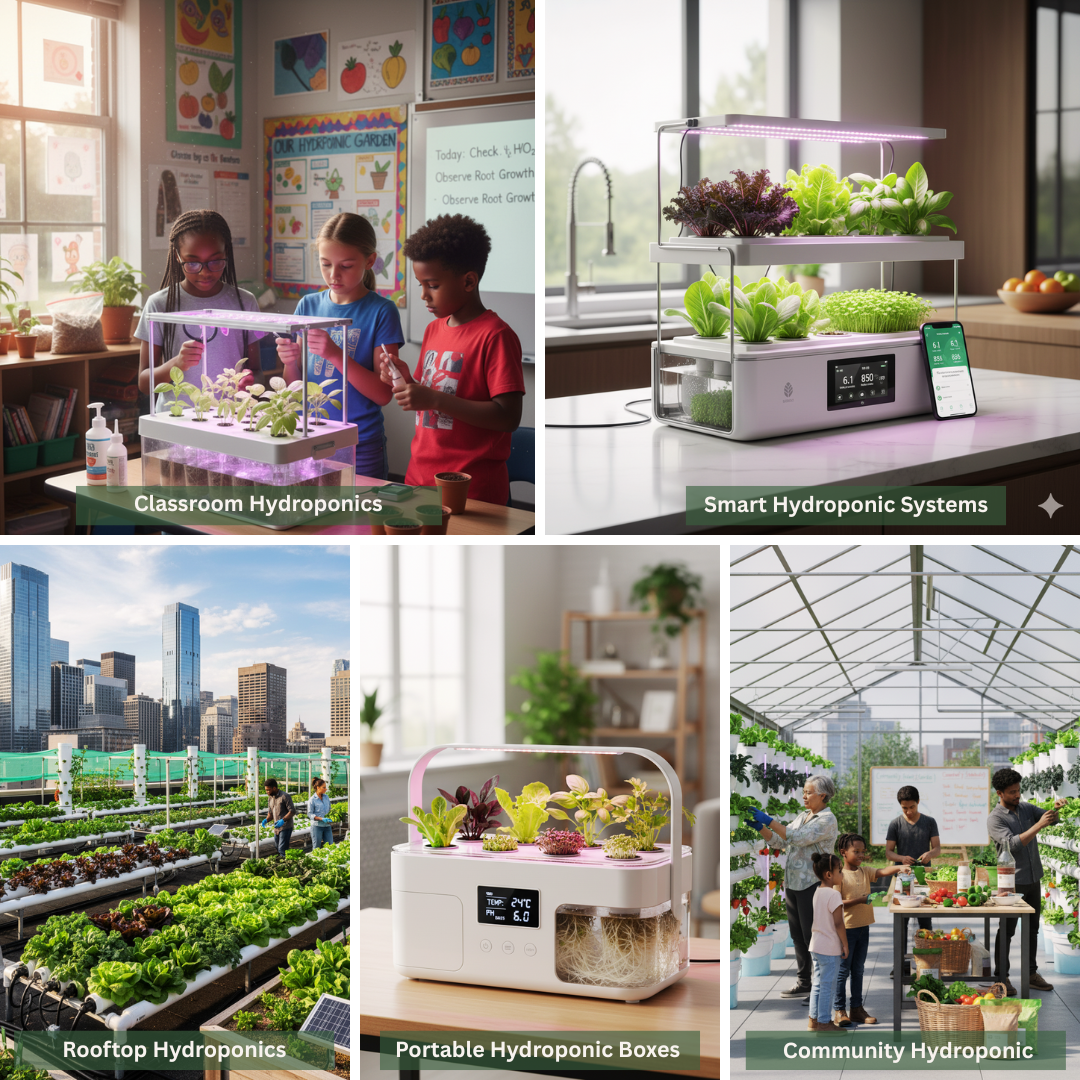
Common Hydroponic Garden Challenges & Solutions That Really Work
1. Yellow Leaves
A classic sign of a nutritional deficit, typically nitrogen or an improper pH level, is yellowing of the leaves. Leaves may also yellow if plants are stressed due to inconsistent watering or insufficient light. Early detection is key, as prolonged nutrient stress can stunt growth and reduce yield.
Solution
Test your nutrient solution and ensure it contains the correct nitrogen balance. Adjust the pH to the optimal 5.5–6.5 range. Also, confirm plants are receiving adequate light.
Correcting nutrient deficiencies and pH quickly will restore leaf colour and support healthy growth. Regular monitoring prevents recurrence.
2. Root Rot
Root rot occurs when roots are deprived of oxygen or exposed to contaminated water. It usually appears as brown, mushy, or foul-smelling roots.
Overwatering, stagnant water, or unclean equipment can promote fungal growth, which damages the root system and impairs nutrient uptake, threatening plant health.
Solution
Use air pumps or air stones to oxygenate the nutrient solution continuously. Keep your system clean and sterilize reservoirs regularly. Remove affected roots promptly and reduce water stagnation.
Healthy, oxygen-rich water prevents fungal infections and ensures strong root development, protecting your hydroponic plants.
3. Algae Growth
Algae can develop when light penetrates nutrient reservoirs or trays. It competes with plants for nutrients and oxygen, potentially stunting growth.
Algae is most common in sunny indoor areas or systems without proper light shielding. Early control prevents widespread contamination and maintains plant health.
Solution
Cover reservoirs with opaque materials to block light. Avoid exposing the nutrient solution to sunlight. Clean surfaces regularly and remove algae when detected.
Using lids or dark containers minimizes algae growth. Preventing algae ensures nutrients go to the plants instead of unwanted growth, supporting a healthy hydroponic garden.
4. Slow Growth
Plants may grow slowly due to imbalances in nutrient concentration, improper pH, insufficient light, or suboptimal temperature.
Even minor deviations can affect plant metabolism and reduce overall productivity. Slow growth is usually a sign that one or more environmental conditions need adjustment.
Solution
Check the nutrient solution for proper composition and concentration. Ascertain that the pH falls within the ideal range. Adjust lighting intensity or duration, and maintain a suitable temperature.
Correcting these factors encourages faster growth. Regular monitoring and adjustments keep your hydroponic vegetables thriving efficiently.
5. Nutrient Burn
Occurs when plants receive too high a concentration of nutrients, causing leaf tips to brown or curl. Over-fertilization stresses plants, reducing growth and sometimes leading to permanent damage.
Solution
Use pure, pH-balanced water to flush the system and get rid of extra nutrients. Reduce fertilizer concentration to recommended levels and monitor EC (electrical conductivity). Gradually reintroduce nutrients to prevent recurrence and ensure healthy growth.
6. Wilting or Drooping Plants
Wilting may result from underwatering, overwatering, or root damage. Even in hydroponics, roots can fail to absorb water properly if the system isn’t balanced. Environmental stress, like heat or oxygen deprivation, can worsen the problem.
Solution
Check water levels and oxygenation. Ensure roots are healthy and not damaged by disease or pests. Modify environmental factors like humidity and temperature. Consistent monitoring and proper care restore plant turgor and prevent future drooping.
7. Pest Infestation
Despite being soil-free, hydroponic systems can still attract pests like aphids, spider mites, or fungus gnats. Infestations reduce plant health, stunt growth, and can spread quickly in indoor systems.
Solution
Introduce natural predators, sticky traps, or organic insecticidal sprays. Maintain cleanliness, remove infested plants, and monitor regularly. Early detection and isolation prevent pests from spreading, keeping the hydroponic garden safe and productive.
8. Flower or Fruit Drop
Plants may produce flowers but fail to set fruit, often due to nutrient imbalance, temperature stress, or insufficient light. This can reduce the overall yield of fruiting vegetables like tomatoes or peppers.
Solution
Ensure nutrients are balanced, particularly phosphorus and potassium. Maintain optimal temperature and humidity. Provide adequate lighting, and if needed, pollinate flowers manually. Monitoring and adjusting conditions encourages successful fruit development.
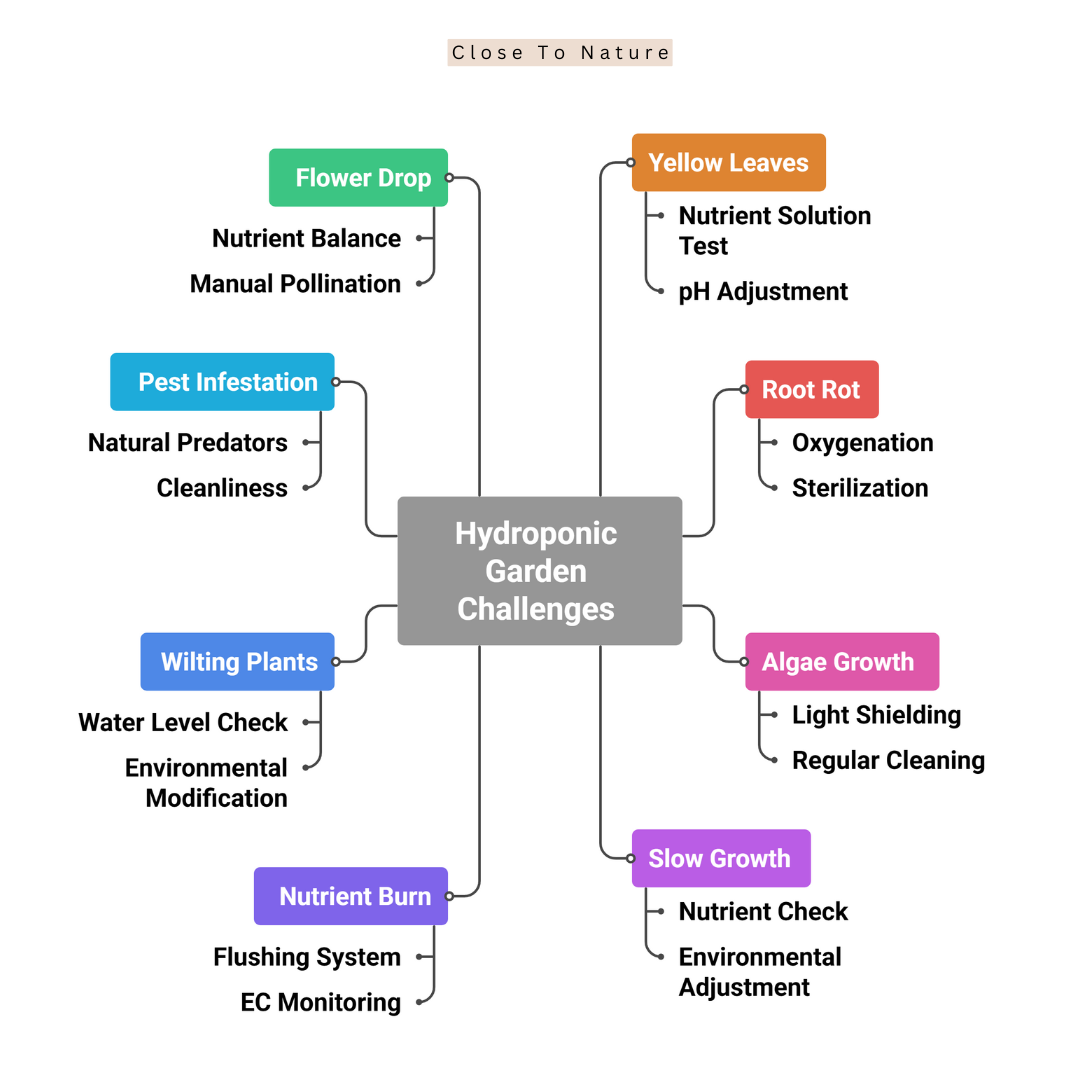
FAQs
1. Are Hydroponic Vegetables Healthy?
Yes, hydroponic vegetables are healthy. They grow in nutrient-rich water without soil, reducing pesticide use. They retain essential vitamins and minerals, often matching or exceeding the nutritional value of soil-grown vegetables.
2. How Much Does Hydroponics Cost?
Hydroponic system costs vary widely. Small home setups start around $50–$200, while commercial systems can exceed $10,000. Costs depend on size, equipment, lighting, and automation level, plus ongoing nutrient and water expenses.
3. Can Hydroponics Be Organic?
Yes, hydroponics can be organic if organic-approved nutrients are used, and systems follow certified organic standards. Organic hydroponics avoids synthetic fertilizers and pesticides, though regulations vary by country and certifying body.
4. Do Hydroponic Vegetables Taste Different?
Hydroponic vegetables can taste as fresh and flavorful as soil-grown ones. Taste differences are minimal if nutrient balance, water quality, and proper growth conditions are maintained. Freshness often enhances flavour.
5. Are Hydroponic Vegetables Less Nutritious?
Not necessarily. Hydroponic vegetables can be equally or more nutritious than soil-grown produce. Nutrient content depends on the solution used. Controlled environments can optimize vitamin and mineral levels effectively.
Conclusion
A hydroponic vegetable garden offers a modern, efficient way to grow fresh, nutritious produce at home, without soil. It saves space, conserves water, and allows year-round harvesting.
While challenges like nutrient imbalances or pests can occur, proper care and monitoring ensure healthy, productive plants.
Ideal for beginners and experienced gardeners alike, hydroponics combines technology and nature to deliver faster growth, higher yields, and cleaner, sustainable vegetables, making it a wise choice for anyone passionate about home gardening.
I trust you enjoyed this article on the Hydroponic Vegetable Garden Ideas for Healthy Living. Please stay tuned for more inspiring guides, helpful tips, and ideas to help you live closer to nature every day.
Take care!
— JeannetteZ
💬 Your Opinion Is Important To Me
Do you have thoughts, ideas, or questions? I’d love to hear from you. Please leave your comments below or email me directly at Jeannette@Close-To-Nature.org.
📚 More Nature-Inspired Reads
Explore more ways to connect with nature, nurture your pets, and live in harmony with the world around you 🌿

